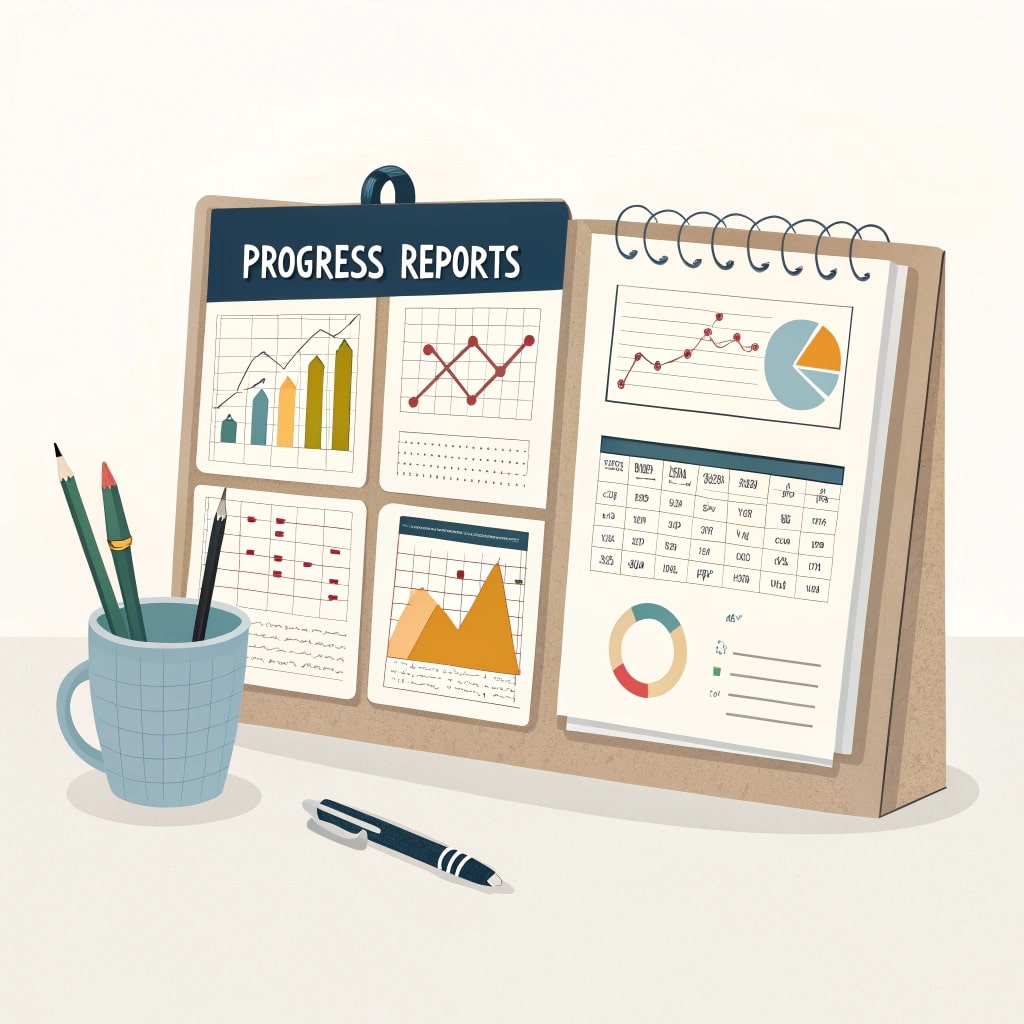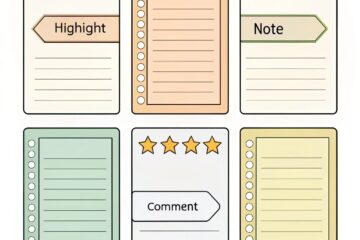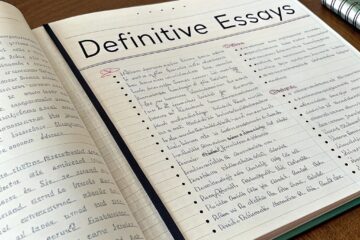How to Write a Progress Report: A Complete Guide for Students and Professionals

Introduction: Understanding Progress Reports
Writing a progress report might seem daunting at first, but it’s actually a straightforward process once you understand its purpose and structure. A progress report is essentially a communication tool that provides stakeholders with information about the current status of a project, what has been accomplished, what challenges have arisen, and what steps will be taken next. Whether you’re a student working on a semester-long project or a professional updating clients and supervisors, knowing how to write a progress report effectively is a valuable skill that will serve you throughout your academic and professional career.
Progress reports not only help keep projects on track but also demonstrate your accountability and organizational skills. In this comprehensive guide, we’ll walk through the essential elements of progress report writing and provide practical tips to help you create clear, concise, and effective reports that showcase your progress and professionalism.
Why Progress Reports Matter
Before diving into the mechanics of how to write a progress report, let’s understand why they’re so important:
Tracking Development
Progress reports provide a systematic way to document project development over time. They create a historical record that you can reference to:
- Track how far you’ve come since starting the project
- Identify patterns in productivity or challenges
- Demonstrate consistent effort and improvement
Communication Tool
One of the primary functions of progress reports is communication. They help:
- Keep stakeholders informed about project status
- Manage expectations regarding timeline and deliverables
- Highlight achievements and address concerns proactively
- Reduce miscommunication by providing regular documented updates
Accountability Mechanism
Regular progress reporting helps establish accountability by:
- Creating deadlines for incremental achievements
- Documenting commitments and their fulfillment
- Providing transparency about how time and resources are being used
According to a study by the Project Management Institute, projects with regular progress reporting are 28% more likely to meet their objectives and deadlines. This emphasizes how crucial proper progress reporting is for project success.
Types of Progress Reports
Progress reports can take various forms depending on their purpose, audience, and frequency. Understanding which type fits your situation is the first step in learning how to write a progress report effectively.
Based on Frequency
Daily Reports: Used in fast-paced environments or during critical project phases. These brief updates focus on immediate tasks and challenges.
Weekly Reports: The most common format, balancing detail with practicality. Weekly reports typically cover accomplished tasks, current activities, and short-term plans.
Monthly/Quarterly Reports: More comprehensive overviews that often include analysis of trends, budget considerations, and broader strategic elements.
Based on Format
Memo-Style Reports: Brief, internal documents following a simple format with bullet points and concise sections.
Letter-Style Reports: More formal documents addressed to specific individuals, often used for external stakeholders or clients.
Formal Reports: Comprehensive documents with a professional structure, often including executive summaries, detailed analysis, and visual elements.
Based on Purpose
Academic Progress Reports: Submitted by students to instructors about research projects, theses, or long-term assignments.
Project Status Reports: Used in professional settings to update team members and management on project milestones.
Grant Progress Reports: Required by funding organizations to demonstrate how resources are being used and what outcomes are being achieved.
Regardless of the type, all progress reports share common elements and purposes, which we’ll explore next.
Essential Elements of an Effective Progress Report
Learning how to write a progress report begins with understanding its core components. While formats may vary, most effective progress reports include the following elements:
Header Information
Every progress report should begin with identifying information:
- Project title or subject
- Report date and period covered
- Author’s name and role
- Names of recipients/stakeholders
- Project ID or reference number (if applicable)
This information immediately establishes context and relevance for readers.
Executive Summary/Introduction
This brief section (typically 3-5 sentences) provides a high-level overview of:
- The project’s purpose
- Current status (on track, ahead, or behind schedule)
- Major achievements during the reporting period
- Critical issues requiring attention
- Next steps
Many decision-makers may only read this section, so it should be comprehensive yet concise.
Accomplishments Section
This section details what has been completed during the reporting period:
- Completed tasks and milestones
- Deliverables produced
- Significant decisions made
- Quantifiable progress measurements (percentage complete, tasks finished, etc.)
Use specific metrics whenever possible to provide concrete evidence of progress. For example, instead of saying “made good progress on research,” say “completed literature review consisting of 25 academic sources.”
Current Work Section
This section describes activities currently underway:
- Tasks in progress
- Percentage complete for each major task
- Who is responsible for each component
- Expected completion dates
This gives stakeholders visibility into the day-to-day work happening on the project.
Challenges and Solutions
Here, you address any issues affecting progress:
- Obstacles encountered
- Delays and their causes
- Resource constraints or other limitations
- Solutions implemented or proposed
- Assistance needed from stakeholders
Being transparent about challenges demonstrates honesty and proactive management. Always pair problems with potential solutions to show forward thinking.
Next Steps/Looking Ahead
This forward-looking section outlines:
- Tasks planned for the next reporting period
- Upcoming milestones and deadlines
- Resources needed for future work
- Potential risks on the horizon
This section helps set expectations and allows stakeholders to prepare necessary support.
Visuals and Supporting Material
Data visualization enhances understanding and readability:
- Progress charts or graphs
- Gantt charts showing timeline and task completion
- Before/after images (if relevant)
- Budget summaries or resource allocation charts
Visual elements make complex information more digestible and can highlight progress more effectively than text alone.
Step-by-Step Process: How to Write a Progress Report
Now that we understand the key components, let’s break down the process of writing a progress report into manageable steps:
Step 1: Gather Your Information
Before you start writing, collect all relevant information:
- Review your project plan and previous reports
- Check your calendar for completed and upcoming events
- Compile metrics and statistics
- Note major decisions, changes, or achievements
- Identify obstacles encountered and how they were addressed
Having this information organized will make writing much easier and ensure you don’t overlook important details.
Step 2: Define Your Audience and Purpose
Ask yourself:
- Who will read this report? (Instructors, supervisors, clients, teammates?)
- What do they need to know about the project?
- What decisions might they make based on this information?
- How technical should your language be?
Tailoring your report to your audience ensures the information is relevant and accessible. For instance, a report for technical teammates might include more specific details than one for executive stakeholders.
Step 3: Create an Outline
Based on the essential elements discussed earlier, create an outline following your organization’s template or a standard format:
- Header information
- Executive summary
- Accomplishments
- Current work
- Challenges and solutions
- Next steps
- Supporting materials
This structure ensures you cover all necessary components in a logical flow.
Step 4: Write the First Draft
With your outline and information prepared:
- Focus on clarity and conciseness
- Use active voice whenever possible
- Include specific details and metrics
- Maintain a professional, positive tone
- Be honest about challenges but solution-oriented
- Use bullet points for lists to improve readability
Don’t worry about perfection in the first draft—focus on getting the information down.
Step 5: Add Visual Elements
Enhance your report with appropriate visual elements:
- Charts showing progress against timeline
- Graphs illustrating key metrics
- Color-coding to highlight status (green/yellow/red)
- Screenshots of relevant work products (if appropriate)
Visuals break up text-heavy sections and often communicate status more effectively than words alone.
Step 6: Review and Revise
After completing your draft:
- Check for clarity, conciseness, and completeness
- Verify that all data and metrics are accurate
- Ensure the tone is professional and constructive
- Confirm that challenges are balanced with solutions
- Review for grammar, spelling, and formatting consistency
Consider having a colleague review the report to catch any issues you might have missed.
Step 7: Finalize and Submit
Once you’re satisfied with the content:
- Format according to organizational guidelines
- Include any required appendices or attachments
- Save in the appropriate file format
- Submit through proper channels
- Store a copy for your records and future reference
Timely submission demonstrates professionalism and respect for stakeholders’ time.
Progress Report Templates and Examples
Having templates and examples can significantly streamline the process of learning how to write a progress report. Here are some practical formats you can adapt:
Weekly Project Progress Report Template
PROJECT: [Project Name]
REPORTING PERIOD: [Week Starting Date - Week Ending Date]
PREPARED BY: [Your Name]
EXECUTIVE SUMMARY:
[2-3 sentences summarizing overall status and key achievements]
ACCOMPLISHMENTS THIS WEEK:
- [Task completed] - [Brief description]
- [Task completed] - [Brief description]
- [Task completed] - [Brief description]
IN PROGRESS:
- [Task name] - [Current status] - [Expected completion]
- [Task name] - [Current status] - [Expected completion]
CHALLENGES:
- [Challenge description] → [Solution implemented or proposed]
- [Challenge description] → [Solution implemented or proposed]
NEXT WEEK'S PLAN:
- [Task to be completed]
- [Task to be completed]
- [Task to be started]
RESOURCES NEEDED:
[List any resources or support required]
ATTACHMENTS:
[List any documents attached]
Academic Research Progress Report Template
RESEARCH PROJECT: [Title]
REPORTING PERIOD: [Date Range]
STUDENT: [Name]
SUPERVISOR: [Name]
SUMMARY OF PROGRESS:
[3-4 sentences describing overall research progress]
COMPLETED ACTIVITIES:
- Literature review: [Description and findings]
- Methodology development: [Description]
- Data collection: [Statistics on amount collected]
CURRENT ACTIVITIES:
- [Current research task]: [Status and preliminary findings]
- [Current research task]: [Status and preliminary findings]
CHALLENGES ENCOUNTERED:
- [Research challenge]: [How it was addressed or plan to address]
- [Research challenge]: [How it was addressed or plan to address]
NEXT STEPS:
- [Future research activity]: [Timeline]
- [Future research activity]: [Timeline]
QUESTIONS FOR SUPERVISOR:
[List any questions or areas where guidance is needed]
ATTACHMENTS:
[List any supplementary materials attached]
For more specialized writing assistance, you might find our professional capstone project help services useful, especially when preparing more complex academic reports.
Tips for Writing Exceptional Progress Reports
Mastering how to write a progress report goes beyond following a template. These additional tips will help you create reports that truly stand out:
Be Specific and Quantifiable
Vague statements like “made good progress” don’t provide meaningful information. Instead, use specific metrics:
- Instead of: “Worked on data analysis.”
- Write: “Completed statistical analysis of 1,500 survey responses, identifying three key trends.”
Quantifiable information gives stakeholders concrete understanding of progress.
Maintain Consistency
Consistency in format, terminology, and metrics makes reports easier to compare over time:
- Use the same section headings in each report
- Measure progress using consistent metrics
- Reference the same baseline or targets
- Submit reports on a regular schedule
This consistency creates a reliable record of project evolution.
Focus on Outcomes, Not Just Activities
While it’s important to document activities, focus on what those activities accomplished:
- Instead of: “Held three team meetings.”
- Write: “Resolved resource allocation issues through three targeted team meetings, resulting in a revised timeline approved by all stakeholders.”
This outcomes-focused approach demonstrates the value of your work.
Use Clear, Accessible Language
Avoid jargon or technical language unless absolutely necessary for your audience:
- Keep sentences under 20 words for better readability
- Define any technical terms that must be included
- Use simple language rather than complex terminology
- Break up text with subheadings and bullet points
Clear language ensures your message is understood by all stakeholders.
Be Honest but Constructive
Transparency about challenges is important, but frame issues constructively:
- Acknowledge problems directly
- Focus more on solutions than problems
- Highlight lessons learned from setbacks
- Demonstrate how challenges are improving processes
This balanced approach maintains trust while keeping the tone positive.
Common Progress Report Mistakes to Avoid
Even experienced professionals can make mistakes when writing progress reports. Here are some common pitfalls to avoid:
Information Overload
Providing too much detail can overwhelm readers and obscure key points:
- Stick to relevant information that supports decision-making
- Use appendices for supplementary details
- Focus on exceptions and achievements rather than routine activities
- Remember that most readers will skim, not read every word
A focused report is more likely to be read and understood.
Missing the “So What” Factor
Sometimes reports list activities without explaining their significance:
- Connect activities to project goals and objectives
- Highlight the impact of accomplishments
- Explain how current work advances overall progress
- Make the relevance clear for different stakeholders
Always answer the implicit question: “Why does this matter?”
Burying Important Information
Critical updates should never be hidden within dense paragraphs:
- Put essential information in the executive summary
- Use formatting (bold, italics, highlighting) for key points
- Create separate sections for urgent issues
- Consider a “Key Takeaways” section at the beginning
Make it easy for busy readers to identify critical information quickly.
Focusing Only on Problems
Some reports become a catalog of complaints without balanced content:
- Balance discussion of challenges with achievements
- Include solutions for every problem mentioned
- Highlight positive developments and wins
- Maintain a constructive, forward-looking tone
A balanced report builds confidence in the project and its management.
Ignoring the Audience’s Needs
Different stakeholders need different information:
- Consider creating tailored versions for different audiences
- Highlight information most relevant to each reader group
- Adjust technical language based on audience expertise
- Include section summaries for those who won’t read details
Understanding and addressing audience needs improves report effectiveness.
Progress Reports in Different Contexts
The fundamentals of how to write a progress report remain consistent across settings, but certain contexts have unique considerations:
Academic Progress Reports
In educational settings, progress reports often focus on learning and development:
- Connect activities to learning objectives or research questions
- Demonstrate application of course concepts or research methods
- Reflect on challenges and learning opportunities
- Include questions or areas where guidance is needed
For students working on expository essays or research papers, progress reports can help instructors provide timely feedback and direction.
Workplace Progress Reports
In professional environments, progress reports typically emphasize business impact:
- Connect activities to strategic objectives
- Include budget considerations and resource utilization
- Address stakeholder concerns proactively
- Highlight implications for related projects or departments
Business progress reports often require a stronger focus on ROI and business outcomes than academic reports.
Grant-Funded Project Reports
When reporting to funding organizations, special attention should be paid to:
- Alignment with grant objectives and requirements
- Responsible use of resources
- Impact on target populations or research fields
- Progress against proposed timelines and deliverables
Funding organizations often have specific reporting templates and metrics they require.
Client Progress Reports
When reporting to clients, focus on:
- Value delivered during the reporting period
- Alignment with client goals and expectations
- Clear explanations of technical concepts
- Professional presentation and formatting
Client reports often require more context and explanation than internal reports. For assistance with client-facing reports, our project writing services can provide valuable guidance.
Digital Tools for Progress Reporting
In today’s digital environment, numerous tools can streamline the process of creating and sharing progress reports:
Project Management Software
Tools like Asana, Trello, Jira, and Monday.com offer built-in reporting features:
- Automated progress tracking
- Visual dashboards and charts
- Task status updates
- Timeline views and Gantt charts
These tools can generate report data automatically, reducing manual effort.
Reporting Templates and Platforms
Specialized reporting tools provide structure and consistency:
- Report automation tools like Databox or Klipfolio
- Template libraries in Microsoft Office or Google Workspace
- Collaborative platforms like Notion or Confluence
- Customizable dashboard tools like Power BI
These platforms often include shareable templates specifically designed for progress reporting.
Visualization Tools
Visual elements enhance report clarity and impact:
- Chart and graph generators like Canva or Venngage
- Timeline visualization tools like TimelineJS
- Data visualization platforms like Tableau
- Infographic creators for executive summaries
Visual representations can often communicate progress more effectively than text alone.
Communication Platforms
Modern work environments offer multiple channels for sharing reports:
- Team communication tools like Slack or Microsoft Teams
- Project portals with document repositories
- Email with professional formatting
- Video summaries for complex updates
Consider which platform best suits your audience’s preferences and needs.
The Future of Progress Reporting
As work environments evolve, progress reporting practices are also changing:
Real-Time Reporting
Traditional periodic reports are increasingly supplemented by:
- Live dashboards showing current status
- Automated alerts for milestone completion
- Continuous access to project metrics
- On-demand reporting capabilities
Real-time visibility reduces the need for comprehensive periodic reports in some contexts.
AI-Assisted Reporting
Artificial intelligence is beginning to transform reporting:
- Automated data collection and organization
- Natural language generation for report narratives
- Predictive analytics for forecasting
- Pattern recognition for identifying trends
These capabilities are making reporting more efficient and insightful.
Enhanced Visualization
Modern progress reports increasingly rely on sophisticated visual elements:
- Interactive charts and graphs
- Heat maps showing activity concentration
- Progress animations showing change over time
- Augmented reality presentations for complex projects
These visual innovations help stakeholders grasp complex information quickly.
Conclusion
Learning how to write a progress report is a valuable skill that enhances your effectiveness in both academic and professional environments. Whether you’re updating professors on your research, keeping clients informed about project status, or providing management with visibility into team accomplishments, well-crafted progress reports demonstrate your professionalism, accountability, and communication skills.
By following the structures and best practices outlined in this guide, you can create reports that clearly communicate progress, address challenges constructively, and set expectations for future work. Remember that effective progress reports don’t just document the past—they facilitate decision-making, build trust, and help ensure project success.
For those needing additional support with academic or professional reports, consider exploring our custom essay help or writing services for specialized assistance tailored to your specific needs.
FAQs About Writing Progress Reports
How long should a progress report be?
The length depends on the complexity of the project and reporting frequency. Weekly reports are typically 1-2 pages, while monthly or quarterly reports might be 3-5 pages. Executive summaries should always be kept under 200 words regardless of report length.
How often should progress reports be submitted?
Reporting frequency should align with project pace and stakeholder needs. Fast-moving projects might require weekly reports, while slower projects might use monthly reporting. Critical phases often benefit from more frequent updates.
Should I include problems in my progress report?
Yes, transparency about challenges is important, but always pair problems with solutions or action plans. This demonstrates proactive management and problem-solving skills.
What’s the difference between a status report and a progress report?
Status reports typically provide a snapshot of current conditions, while progress reports emphasize change over time, comparing current status to previous conditions and future goals.
How technical should my progress report be?
Match technical detail to your audience’s expertise. Include technical information for knowledgeable audiences, but provide clear explanations or separate technical appendices when reporting to non-technical stakeholders.
Should I include future predictions in my progress report?
Yes, the “Next Steps” or “Looking Ahead” section should include reasonable projections about upcoming work, potential challenges, and expected progress. This helps stakeholders prepare and set appropriate expectations.
How can I make my progress reports more engaging?
Use visual elements, maintain a clear structure, include relevant stories or examples, and focus on outcomes rather than activities. Keep language clear and concise, and highlight meaningful achievements rather than routine tasks.
By applying these principles and guidelines, you’ll master how to write a progress report that effectively communicates project status and builds confidence in your work. Whether for academic requirements like scholarship essays or professional needs such as climate change research papers, strong reporting skills will serve you throughout your career.



0 Comments